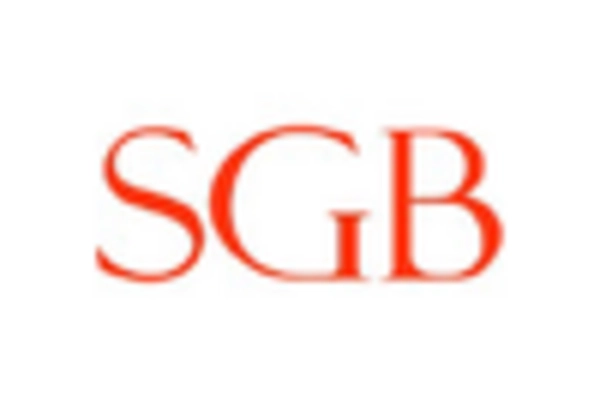Rising Construction Activities
The construction scaffolding-rental market is experiencing a notable surge due to the increasing volume of construction activities across Canada. Government investments in infrastructure projects, such as transportation and public facilities, are driving demand for scaffolding solutions. In 2025, the construction sector is projected to grow by approximately 4.5%, leading to a heightened need for scaffolding rentals. This growth is further fueled by private sector developments, including residential and commercial buildings. As construction companies seek to optimize their operations, the rental model offers flexibility and cost-effectiveness, making it an attractive option. Consequently, the rising construction activities are likely to bolster the construction scaffolding-rental market, as contractors require reliable scaffolding solutions to ensure project efficiency and safety.
Regulatory Framework Enhancements
The construction scaffolding-rental market is significantly influenced by the evolving regulatory landscape in Canada. Stricter safety regulations and compliance standards are being implemented to ensure worker safety at construction sites. As a result, construction companies are increasingly turning to rental services that provide compliant scaffolding solutions. In 2025, it is estimated that compliance-related expenditures in the construction sector will rise by 10%, prompting firms to prioritize safety in their operations. This shift not only enhances worker safety but also drives demand for rental scaffolding that meets regulatory requirements. Therefore, the enhancements in the regulatory framework are likely to propel the construction scaffolding-rental market, as companies seek to mitigate risks associated with non-compliance.
Urbanization and Population Growth
Urbanization trends and population growth in Canada are contributing to the expansion of the construction scaffolding-rental market. As urban areas continue to develop, the demand for residential and commercial buildings is increasing. In 2025, urban population growth is projected to reach 2.5%, leading to a corresponding rise in construction projects. This urban expansion necessitates the use of scaffolding for various construction activities, from high-rise buildings to infrastructure improvements. The rental market provides a practical solution for construction firms, allowing them to access the necessary scaffolding without the burden of ownership costs. Thus, urbanization and population growth are likely to serve as key drivers for the construction scaffolding-rental market, facilitating the completion of essential projects.
Technological Advancements in Scaffolding
Technological advancements are playing a pivotal role in shaping the construction scaffolding-rental market. Innovations such as modular scaffolding systems and digital platforms for rental management are enhancing operational efficiency. In 2025, it is anticipated that the adoption of technology in the construction sector will increase by 15%, leading to improved project management and safety. These advancements allow rental companies to offer more efficient and safer scaffolding solutions, attracting construction firms seeking to streamline their operations. Furthermore, the integration of technology facilitates real-time monitoring and maintenance of scaffolding equipment, ensuring compliance with safety standards. Consequently, technological advancements are likely to drive growth in the construction scaffolding-rental market, as companies embrace modern solutions to enhance productivity.
Sustainability Initiatives in Construction
Sustainability initiatives are increasingly influencing the construction scaffolding-rental market in Canada. As environmental concerns gain prominence, construction companies are seeking eco-friendly scaffolding solutions that align with sustainable practices. In 2025, it is projected that the demand for sustainable construction materials will rise by 20%, prompting rental companies to adapt their offerings. This shift towards sustainability not only addresses environmental issues but also enhances the reputation of construction firms. By opting for rental scaffolding that incorporates sustainable materials and practices, companies can reduce their carbon footprint and appeal to environmentally conscious clients. Therefore, sustainability initiatives are likely to act as a catalyst for growth in the construction scaffolding-rental market, as firms strive to meet evolving consumer expectations.

















Leave a Comment